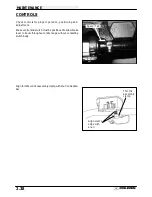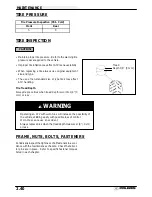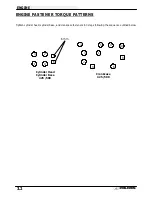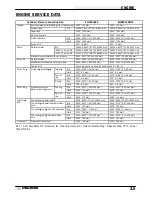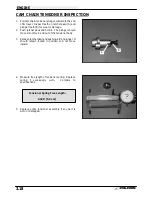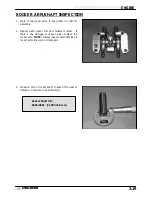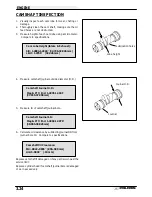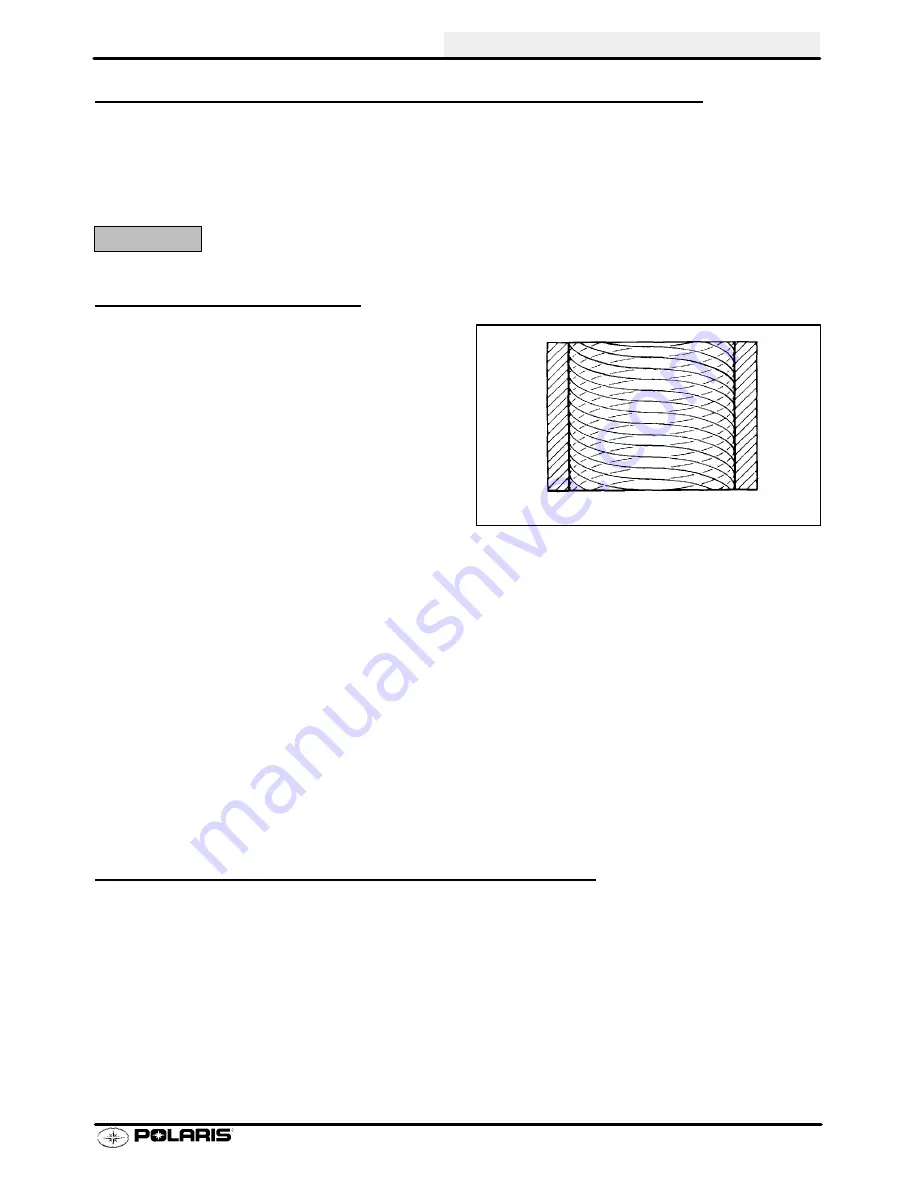
ENGINE
3.11
CYLINDER HONE SELECTION/HONING PROCEDURE
Selecting a hone which will straighten as well as remove material from the cylinder is very important. Using a
common spring loaded finger type glaze breaker for honing is never advised. Polaris recommends using a rigid
hone or arbor honing machine which also has the capability of oversizing.
Cylinders may be wet or dry honed depending upon the hone manufacturer’s recommendations. Wet honing re-
moves more material faster and leaves a more distinct pattern in the bore.
CAUTION:
HONING TO OVERSIZE
If cylinder wear or damage is excessive, it will be nec-
essary to oversize the cylinder using a new oversize
piston and rings. This may be accomplished by either
boring the cylinder and then finish honing to the final
bore size, or by rough honing followed by finish honing.
For oversize honing always wet hone using honing oil
and a coarse roughing stone. Measure the piston (see
piston measurement) and rough hone to the size of the
piston. Always leave .002 - .003
″
(.05 - .07 mm) for fin-
ish honing. Refer to piston-to-cylinder clearance spec-
ifications on page 3.5 before honing. Complete the siz-
ing with fine grit stones to provide the proper
cross-hatch finish and required piston clearance.
A finished cylinder should have a cross-hatch pattern to ensure piston ring seating and to aid in the retention of
the fuel/oil mixture during initial break in. Hone cylinder according to hone manufacturer’s instructions, or these
guidelines:
S
Use a motor speed of approximately 300-500 RPM, run the hone in and out of the cylinder rapidly until cutting
tension decreases. Remember to keep the hone drive shaft centered (or cylinder centered on arbor) and to
bring the stone approximately 1/2
″
(1.3 cm) beyond the bore at the end of each stroke.
S
Release the hone at regular intervals and inspect the bore to determine if it has been cleared, and to check
piston fit. NOTE: Do not allow cylinder to heat up during honing. The thinner areas of the liner around the
ports will expand causing uneven bore.
S
After honing has been completed inspect all port opening areas for rough or sharp edges. Apply a slight cham-
fer to all ports to remove sharp edges or burrs, paying particular attention to the corners of the intake and
exhaust ports.
IMPORTANT:
CLEANING THE CYLINDER AFTER HONING
It is very important that the cylinder be thoroughly cleaned after honing to remove all grit material. Wash the cylinder
in a solvent, then in hot, soapy water. Pay close attention to areas where the cylinder sleeve meets the aluminum
casting (transfer port area). Use electrical contact cleaner if necessary to clean these areas. Rinse thoroughly,
dry with compressed air, and oil the bore immediately with Polaris 2 Cycle Lubricant.
EXAMPLE OF CROSS HATCH PATTERN
Summary of Contents for Sportsman 400
Page 6: ...SPORTSMAN 400 A01CH42AC GENERAL INFORMATION 1 4 MODEL COLOR IDENTIFICATION ...
Page 21: ...Newton Meter to Pound Foot and Pound Inch GENERAL INFORMATION 1 19 TORQUE CONVERSIONS ...
Page 22: ...Newton Meter to Pound Foot and Pound Inch GENERAL INFORMATION 1 20 TORQUE CONVERSIONS ...
Page 152: ...Forward FUEL SYSTEM CARBURETION 4 2 FUEL TANK ASSEMBLY ...
Page 366: ...ELECTRONIC SPEEDOMETER WIRING DIAGRAM ELECTRICAL 10 32 ...
Page 372: ...ELECTRICAL 10 38 NOTES ...
Page 379: ...ELECTRICAL 10 39 WIRING DIAGRAM 2001 SPORTSMAN 400 ...
Page 380: ...ELECTRICAL 10 40 WIRING DIAGRAM 2001 SPORTSMAN 500 EARLY ...
Page 381: ...ELECTRICAL 10 41 WIRING DIAGRAM 2001 SPORTSMAN 500 LATE ...

